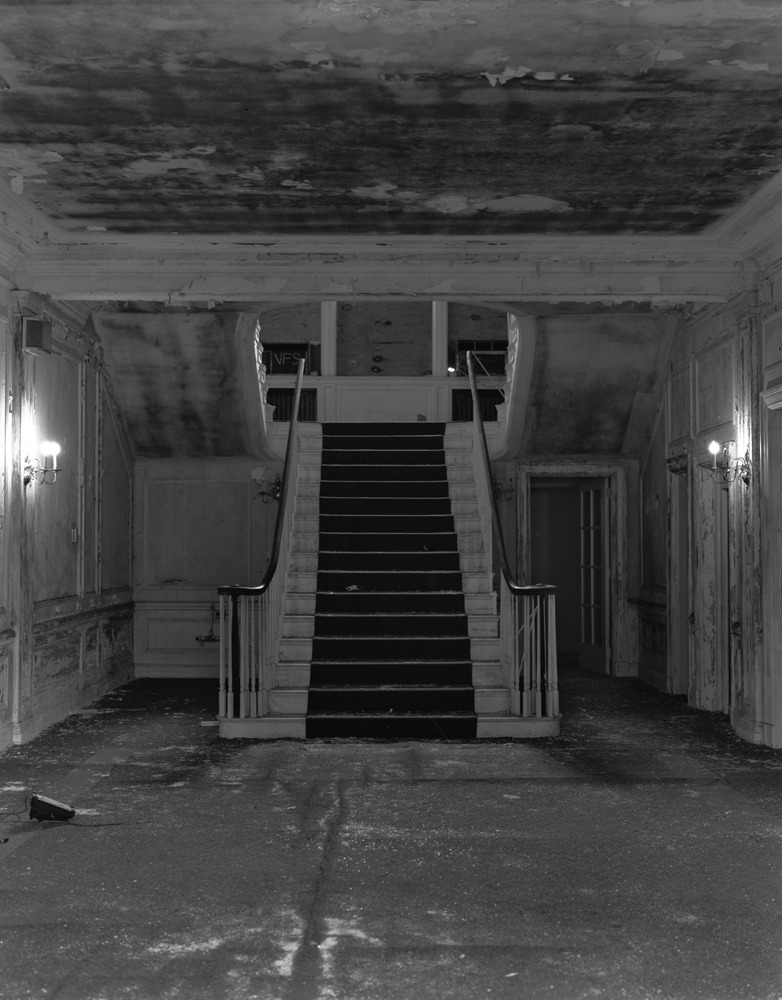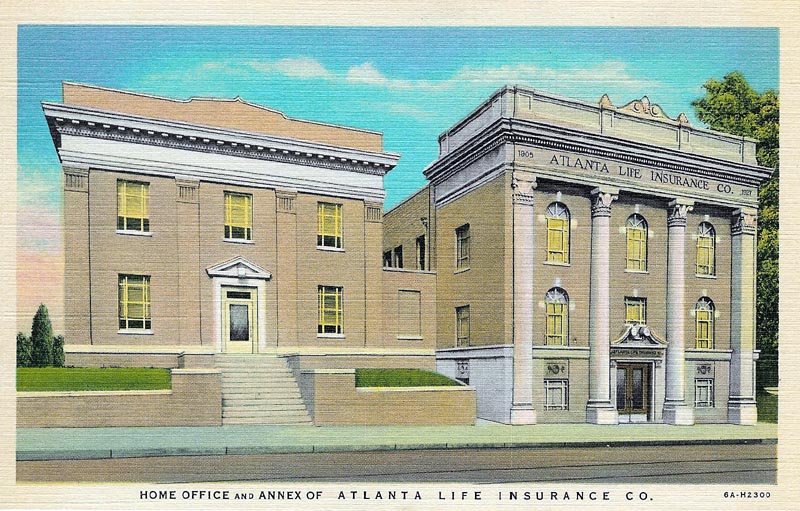In 1844, the Cincinnati Horticultural Society formed a cemetery association with the purpose of founding a picturesque cemetery in their city that would provide a stark contrast to the grim churchyards, which were quickly overcrowding after recurrent cholera epidemics. They were part of a grand tradition of the stately burial ground, the
rural cemetery, which began outside Boston with
Mount Auburn in 1832 and echoed similar funerary landscapes across the pond in Europe.
Rural Cemeteries were romantic landscapes, designed to create seemingly natural settings, rich with lush and diverse vegetation, rolling hills, ponds and streams, and narrow, curvilinear paths and roads that would slow processions and visitors alike to a "stately pace." Mount Auburn was the prototype and remains the standard bearer to this day. The rural cemetery began a transformation of the graveyard to a place that was as much for the enjoyment of the living as a resting place for the dead. As our interests and needs have continued to evolve with each generation, the cemetery and funerary industry have quickly followed suit, leading to numerous forms of landscapes, including the lawn-type and, more recently, the green cemetery.
 |
| c.1880 Rendering of Spring Grove Cemetery (Courtesy of Ohio Memory) |
In 1845,
Spring Grove Cemetery opened for business ~ and it remains active to this day. Horticultural societies would often play an important role in the founding of cemeteries of this type, as they were always intended to become some of the largest and most impressive parks in their cities. Spring Grove was unique in that it was used as an
arboretum for the study of plants, with ornamental plant varieties in excess of 4,300 by 1850 (and 11,300 nursery plants). The marriage of romantic architecture, landscape design, and ornamental horticulture, made these sites breathtaking places for contemplation, memory, and for an afternoon stroll or picnic.
Designed cemeteries like these were typically characterized by particular architectural forms. Ornate gravestones, elaborately-carved tablets (often uniform markers for a family plot), large pedestals, obelisks, a mixture of simpler, traditional forms with breathtaking statuary, family vaults and crypts. The architectural diversity that exploded in America's cemeteries at this time was revolutionary, to put it mildly. But certain architectural forms had always been associated with certain landscape types, prior to the rural type and ever since. Churchyard cemeteries were typically known for having tall and thin tablets, interspersed with the occasional ledger or box tomb. The lawn-type, pioneered by Spring Grove's own
Adolph Strauch, featured mostly low-lying and flush markers that would not obstruct the park-like appearance of the grassy lawn. National Cemeteries were designed to evoke a sense of solidarity and equality; bleached white marble tablets standing in rank. Heritage Conservationists that manage active cemeteries face a challenge of maintaining the integrity of these sites ~ that is preserving the historic design and setting ~ without impeding the ability for plot-holders to express themselves in the commemoration of their loved ones. It is a fine line with dire consequences for those who cross in either direction.
 |
| Walker's Monument (AP) |
When 28 year old, Army Sgt. Kimberly Walker was strangled to death in a Colorado hotel room by her boyfriend on Valentines Day of this year, her family found a very personal tribute to mark her grave. It seems, there was little question as to what Kimberly loved ~ a strange little filter-feeder with square pants, a talent for fast-food grilling, and a mentally-handicapped starfish that lives under a rock for a best friend. Her family commissioned a 7-foot granite SpongeBob, donning a military uniform with Walker's name and rank. A second, matching SpongeBob was also made for Walker's twin sister, Kara, who is still alive; Kimberly's grave would be the first in a pre-purchased family plot.
The family apparently made the arrangements through Spring Grove and with the cemetery's approval, the monuments were placed on October 10th. The next day, Spring Grove's management contacted the family to notify them that the monuments would need to be taken down. A
public statement from Spring Grove President and CEO, Gary Freytag, explained:
...the family chose a design with the guidance of a Spring Grove employee who unfortunately made an error in judgement. The monument does not fit within the Spring Grove Cemetery guidelines, was not approved by senior management and cannot remain here. As an historic cemetery, we must constantly balance the needs of families who have just suffered a loss with the thousands of families who have entrusted us in the past. We are working with the Walker family and are committed to design a solution, at our expense, that will properly memorialize Kimberly within the context of Spring Grove's historic landscape and guidelines.
Is this right? There is no easy answer to that question. If you have one, then you probably haven't given the matter sufficient thought. Between throwing an employee under the bus (or the media in this instance) and patting his team on the back for working on a solution (since SpongeBob "cannot remain" there), Freytag makes an important point: Spring Grove's management has a responsibility to balance the wishes of current customers with those from the previous 160+ years.
Heritage Conservationists and preservation enthusiasts alike, frequently preach the perspective of the building ~ that is, that visitors, owners, and even entire generations are merely one phase in the life of a building. This perspective is more common in Europe and farther reaches of the globe, where buildings have survived in use for five or six centuries, or more; but in the States, it is only associated with what we consider to be properties of exceptional age or importance. You just don't buy a 200 year old plantation house to gut the interior and strip it to the studs so that you can make it as "energy efficient" and comfortable as any McMansion. That's asinine, right? The proper way to live in one of these homes is to seek a compromise between modern comfort, the architect's vision, and often the wishes of previous owners. We are caretakers or stewards, nothing more. There is no place where this balance is more critical than an historic cemetery, especially one that is still active. Cemetery caretakers have to balance the wishes and aesthetic tastes of each generation to bury within their boundaries with the original vision for the cemetery and each generation that left a loved one in the ground and a fingerprint above it. At least, that is, in the historic section.
Spring Grove is a
National Historic Landmark (NHL), an honor reserved for the most significant of historic properties in this country. Spring Grove was bestowed with this honor in 2007 primarily as the birthplace of the lawn-type design movement, which was developed by Adolph Strauch during his tenure as superintendent from 1855 to 1883. Strauch didn't display the sort of reverence for the past expressed above, rather he set about creating a new vision for the cemetery; one that would become the defining principles of his signature movement: no fences or hedges around plots permitted (existing ones could not be repaired or replaced in the future); one monument per plot surrounded by flush markers; and all designs would be approved by senior administrators. Where the rural cemetery was a marriage of romantic ideals of architecture and landscape design, the lawn-type cemetery was a divorce of the architecture and the landscape got to keep the house. Over time, the cemetery would appear less-crowded, particularly in what would have been the newer sections at that time. In Strauch's time, the cemetery grew another 200 acres and it would continue to grow throughout the following century.
The NHL boundary for Spring Grove encompasses 345 acres with the road that terminates at the historic northern gate as it's northern limit. It is within this area of the cemetery, that Spring Grove's management has to practice the utmost caution and consideration in the treatment of existing markers and the placement of any new ones. The areas within the cemetery that reside beyond this boundary would have been excluded because they were developed after the period of significance (defined as 1845-1925), and as such, do not reflect the architectural traditions and ideals that have made this place significant.
 |
| Spring Grove's Map. Walker's grave is in the highlighted section (above), while the approximate northern limit of the NHL boundary is shown in orange (below). The oldest sections of the cemetery are not shown. |
Kimberly Walker was buried in Section 144, which is near the northernmost limits of the active cemetery, making it among the most recent to be developed. According to the site map available on their website, there are some 300 acres north of this that have been set aside for future use. For the casual viewer, this would seem to be pretty far from the older sections of the cemetery; and in this instance, the casual viewer would be right. As a Heritage Conservation professional, I can say that what happens in Section 144 would have no impact on the historic integrity of the NHL (or the historic cemetery, in general), so long as you limit any monuments to one story in height and don't build any towers. So, this is not an issue of historic integrity. It is about appearances ~ conflicting aesthetics in a modern cemetery.
So, how does one resolve this conflict? The obvious solution is to return the SpongeBob twins to the Walker Family plot, where they were originally installed. Are they unusual for the setting? Sure ~ but they give character to an otherwise typical burial section and, more importantly, the markers were approved. Cemetery administrators decided after the fact that the SpongeBobs conflict with the aesthetic they want for their cemetery; this sort of issue is nothing new. But rather than learn from what they perceive to be a mistake and try to avoid this scenario in the future, they have chosen to undo it at considerable cost to themselves and the emotional expense of a bereaved family. That is their prerogative ~ if they want to weather the negative publicity, let them; however, do not justify that action with a responsibility to the past. There is a world of difference between the goal of design guidelines for an historic district and design guidelines for, lets say, a new urbanist retirement community in suburban Orlando, Florida, dating to the 1990s. The former is like preserving a finished painting, while the latter is about actively painting by numbers to realize some vision for the finished product. The caretakers of Spring Grove Cemetery have the difficult, but not unusual, responsibility of doing both concurrently; but they do a disservice to the preservation community when they blend these roles to justify an unpopular decision that essentially has nothing to do with their responsibility as stewards of an historic property. It undermines the work of other preservationists trying to make similar cases for more context-sensitive additions in their historic properties. So, Spring Grove... return the Bobs.
 |
| (Courtesy of Timeline Cover Banners & Nickelodeon) |
~MK






















